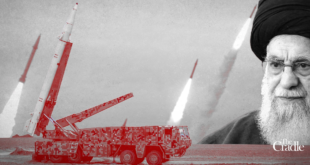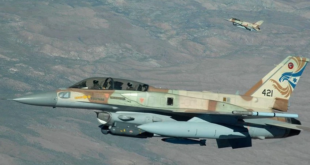The war that began on October 7 between the terrorist group Hamas and the state of Israel is many things. It is, of course, part of the Palestinian-Israeli struggle, but also a new episode in the history of Islamism and Islamist terrorist organizations. It is many other things. It is also a test, a test for Iran’s strategy of developing a diffuse network of proxies – states, militias, terrorist groups – which it can use to project power, against Israel and against the Americans and other adversaries. As such, it is a bloody “feasibility study” or deadly “proof of concept” in how this strategy actually works. During the last major confrontation between Israel and a major Iranian proxy – the Tammuz 2006 War between Hezbollah and Israel – the Iranian network was far less developed than it is today. In 2006 American troops were still in Iraq, Syria was whole and at peace, and the old dictator Ali Abdullah Saleh still ruled in Yemen.
As the Gaza War enters its third month, we have learned certain things. Hamas is certainly paying a heavy price for its October 7 murder raid and steadily losing on the ground. Hezbollah has provoked and attacked Israel across the Lebanese border but has refrained from all out war, a position that has annoyed Hezbollah’s Palestinian boosters. But one major surprise has been the role of Houthi-ruled Yemen, often seen as a distant, marginal player compared to Hezbollah and to the powerful militias in Iraq.
Not only have the Houthis been able to launch medium-range ballistic missiles (MRBM) against Israel at a distance of almost 2,000 kilometers but have also been able to disrupt maritime shipping in a key global artery comprising the Red Sea, the Suez Canal, and the Bab Al-Mandab, the straits connecting the Red Sea to the Indian Ocean. The Houthis already had considerable experience using missiles and drones against their adversaries in the United Arab Emirates and, especially, Saudi Arabia.
The Houthis, initially a Shia insurgent group from the northern part of Yemen, were able to enter the country’s capital in 2014 with the connivance of the former dictator Ali Abdullah Saleh, who would decide to switch sides again in 2017 and was killed by the Houthis. A brutal war between the Houthis, openly supported by Iran, and a Saudi-led coalition including anti-Houthi Yemenis, the Saudis, and the Emiratis began in 2015 and raged until last year. The Obama Administration initially supported the Saudi-led intervention only to turn against it.
Yemen, which was already the poorest country in the Middle East before the war began, would descend further into calamity. In 2017, the Economist dubbed it “the most wretched place on earth” and Houthi-controlled Yemen, which is only slightly smaller than the pre-1990 Republic of Yemen, is heavily dependent on international assistance. Most Yemenis need foreign food aid, the country is running out of water, and millions of children are at risk of famine and disease. Some of the almost 400,000 Yemenis to die since the war began in 2015 starved to death. Cholera, inflation, and economic crisis have all battered the long-suffering Yemeni people in recent years. And although a very tenuous UN-orchestrated ceasefire has held since April 2022, the situation is still dire; every year the international community spends billions to make the lives of the Yemeni people a bit less miserable. American assistance – channeled through the UN World Food Programme (WFP) – amounts to hundreds of millions of dollars a year going to Houthi-controlled Yemen (about 70 percent of the population in Yemen is in the Houthi-controlled areas).
This grim scenario abounds in ironies. The Americans are literally feeding the population of a regime whose motto is “Allahu Akbar/Death to America/Death to Israel/Curse the Jews/Victory to Islam.” The United Nations, with American and European support, stepped in to prevent the Saudi-led coalition from capturing Houthi Yemen’s main port, Al-Hodeidah in 2018. The port was the entry point for most humanitarian aid to Houthi-ruled Yemen and a major source of revenue and weapons shipments from Iran for the Houthi regime. Later, to facilitate humanitarian assistance to the Yemeni people and encourage diplomacy, the Biden administration removed the Houthis from the U.S. government’s list of Foreign Terrorist Organizations. The step was one of the very first things the Biden Administration did, within a few weeks of coming to power in February 2021.
Who would have expected that the farthest use of a ballistic missile in wartime and the first ever “combat interception in outer space” would occur on October 31, 2023, when Israel intercepted a Houthi-launched missile? Houthi Yemen is simultaneously a miserable, needy, broken country dependent on international charity and – thanks to Iran – an innovative leader in the use of relatively cheap but powerful missile systems, attack drones, and naval warfare tools to project power. In this it resembles no one as much as Hamas-ruled Gaza, also dependent on the NGO-Industrial Complex and a lifeline of (mostly) Western charity, and able to spend its time and funds on terror and war rather than on caring for its own people.
Houthi Yemen’s success in targeting ships in the Red Sea has now prompted the development of a new U.S.-led anti-Houthi naval effort. Nineteen nations have joined the effort although only nine, mostly Western countries, are willing to publicly say they are part of the alliance. Distant Bahrain was the only Arab state willing to publicly admit to their participation. Such is the power of the Houthis and their Iranian patrons.
Operation Prosperity Guardian faces an extremely difficult task. Yemen is already rubble. The Houthis endured thousands of airstrikes from their enemies in the recent war and know how to hide their weapons (not hard to do) and have the experience of their allies in Iran, Hamas, and Hezbollah to draw upon. They are used to using their populations as human shields and know the West has a humanitarian weak spot. The Yemeni people may be suffering but the regime has a battle-hardened military core seemingly ready for new adventures. Those are some of the reasons for their bravado after American threats and warnings for Yemen to cease hitting ships in the Red Sea. Where Hezbollah has been relatively cautious in its assaults on Israel since October 7, the Houthi leadership is positively giddy with anticipation, taunting both the Americans and Israelis. One lesson the Iranians may have already learned from this war is that their Yemeni proxy is more valuable than they thought.
 Eurasia Press & News
Eurasia Press & News




